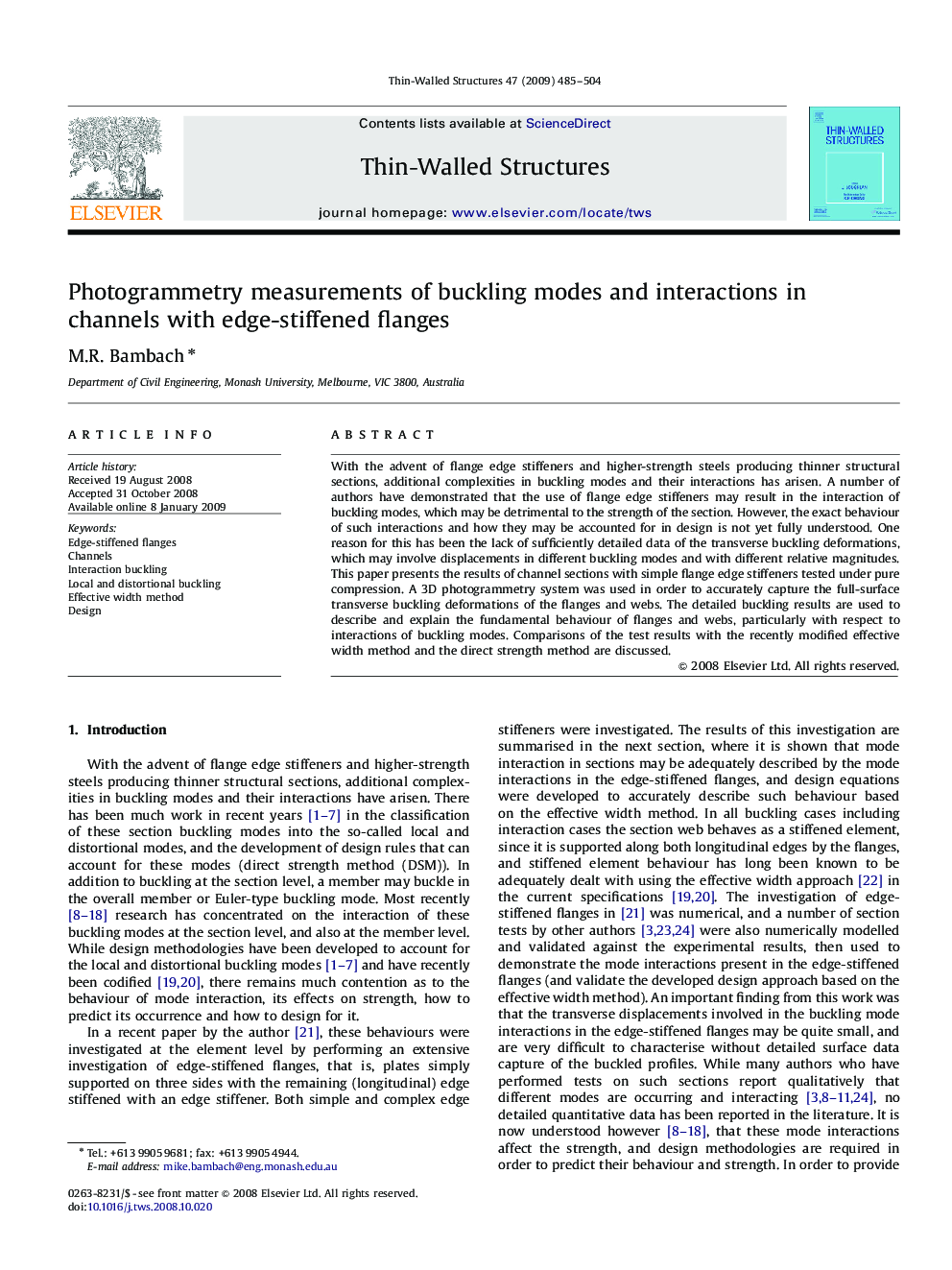| Article ID | Journal | Published Year | Pages | File Type |
|---|---|---|---|---|
| 310061 | Thin-Walled Structures | 2009 | 20 Pages |
With the advent of flange edge stiffeners and higher-strength steels producing thinner structural sections, additional complexities in buckling modes and their interactions has arisen. A number of authors have demonstrated that the use of flange edge stiffeners may result in the interaction of buckling modes, which may be detrimental to the strength of the section. However, the exact behaviour of such interactions and how they may be accounted for in design is not yet fully understood. One reason for this has been the lack of sufficiently detailed data of the transverse buckling deformations, which may involve displacements in different buckling modes and with different relative magnitudes. This paper presents the results of channel sections with simple flange edge stiffeners tested under pure compression. A 3D photogrammetry system was used in order to accurately capture the full-surface transverse buckling deformations of the flanges and webs. The detailed buckling results are used to describe and explain the fundamental behaviour of flanges and webs, particularly with respect to interactions of buckling modes. Comparisons of the test results with the recently modified effective width method and the direct strength method are discussed.
